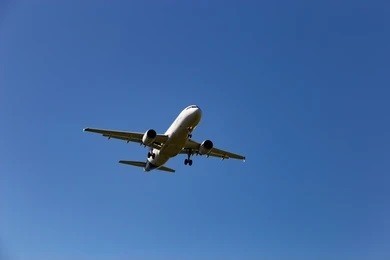
views
The Secret of the Skies: How White Paint Saves Airlines Money and Energy
In the high-stakes world of aviation, every detail matters. Airlines continuously seek ways to improve efficiency, reduce costs, and minimize their environmental footprint. Among the many factors contributing to these goals, one stands out for its simplicity and effectiveness: the color of an aircraft's paint. While it might seem like a mere aesthetic choice, opting for white paint on airplanes has significant implications for energy consumption, cost savings, and sustainability.
The Science of Heat Absorption
When airplanes are in flight, they are exposed to the sun's intense rays and the heat generated by onboard technical devices. As a result, the exterior surface of an aircraft can become extremely hot. To ensure passenger comfort and maintain safe operating conditions, the aircraft's cooling systems must work harder, consuming more energy.
The choice of paint color directly impacts the amount of heat an aircraft absorbs. Dark colors, such as black or navy blue, attract and retain more sunlight, causing the surface to heat up even more. This increased heat absorption exacerbates the demand on cooling systems, leading to higher fuel consumption and operational costs.
Why White Paint?
White paint, on the other hand, reflects a substantial portion of the sun's rays, preventing excessive heat buildup. By keeping the aircraft's exterior cooler, white paint reduces the workload on cooling systems, resulting in lower energy consumption and fuel usage. This seemingly minor detail plays a crucial role in enhancing the overall efficiency of an airline's operations.
Economic Advantages
The economic benefits of using white paint on airplanes extend beyond just fuel savings. Reduced energy consumption translates to lower operating expenses, which can significantly impact an airline's profitability. Given the industry's thin profit margins, any measure that helps control costs is highly valued.
Moreover, white paint tends to be more durable and resistant to fading compared to darker colors. This means that aircraft painted white require less frequent repainting, further reducing maintenance costs. In an industry where every penny counts, these savings add up over time.
Environmental Impact
The environmental benefits of using white paint on airplanes are equally noteworthy. By minimizing fuel consumption, airlines can reduce their carbon footprint and contribute to a more sustainable future. As the aviation industry faces increasing pressure to address its environmental impact, the use of white paint represents a positive step towards greener practices.
Passenger Comfort and Safety
In addition to economic and environmental advantages, white paint offers practical benefits for passengers and safety. A cooler aircraft exterior helps maintain a comfortable cabin temperature, enhancing the overall passenger experience. Furthermore, white paint improves the visibility of the aircraft in the sky, making it easier for other pilots and air traffic controllers to spot, thereby enhancing safety.
Historical Context
The preference for white paint in aviation is not a recent trend. This practice dates back to the early days of commercial flight when airlines recognized the practical benefits of this color choice. Over the years, white paint has become synonymous with commercial aviation, symbolizing efficiency and reliability.

While most aircraft are predominantly white, airlines often incorporate branding elements and logos into the design, adding splashes of color to the tail, fuselage, and engines. However, the primary color remains white, ensuring the benefits of heat reflection and energy conservation are maximized.
A Strategic Decision
The decision to paint airplanes white is strategic, driven by scientific principles, economic considerations, and environmental responsibility. It exemplifies how even the smallest details in aviation can have far-reaching implications for efficiency, cost savings, and sustainability.
As passengers, we may not often consider the significance of the aircraft's color, but the use of white paint is a testament to the meticulous planning and innovation within the aviation industry. It serves as a reminder that in the quest for efficiency and sustainability, every detail matters, no matter how small.
Conclusion
In conclusion, the choice to paint airplanes white is far more than an aesthetic decision. It is a carefully considered strategy that saves money, conserves energy, and reduces the environmental impact of air travel. By reflecting heat and minimizing the demand on cooling systems, white paint helps keep fuel consumption and operating costs under control. As the aviation industry continues to evolve, the use of white paint remains a steadfast and practical solution to the challenges of energy efficiency and sustainability in the skies.

-
Economic Perspective: "White paint significantly reduces fuel consumption and operational costs by reflecting heat and keeping the plane cooler."
-
Environmental Perspective: "By using white paint, airlines lower carbon emissions and contribute to sustainability, making a big impact with a small change."
-
Passenger Comfort and Safety Perspective: "White paint improves passenger comfort and safety by maintaining a cooler cabin temperature and enhancing the plane's visibility."




















Comments
0 comment